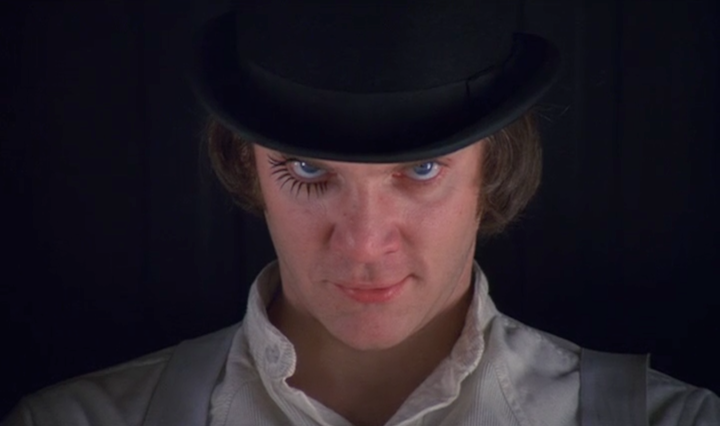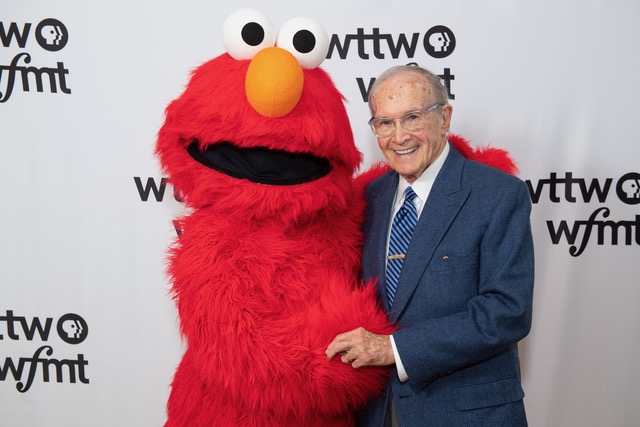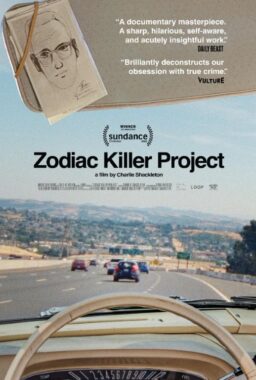Editor’s Note: Nathan Andersen, a philosophy and film teacher at Eckerd College, offers a philosophical reading of cinema through the works of Plato, most notably by examining Stanley Kubrick‘s “A Clockwork Orange” and how it explores many of Plato’s themes. Andersen focuses on one of the most memorable images of Kubrick’s film–a man strapped to a chair and forced to watch violent acts on-screen–and sheds new light on the themes explored in the movie through philosophies explored centuries earlier. The book is now available on Amazon.com.
A
face you won’t easily forget appears on screen, centered, outlined sharply in the dark. It leans forward intently, so that a black bowler hat and hair below the ears frame the bright blue eyes that see you right through. It’s a young man, with a crooked half smile, welcoming but far from friendly, with long, sharp artificial lashes fixed upon the lids of his wicked right eye. Framed
just to show his head and shoulders, wearing an open white button-up shirt and suspenders, he looks straight at you, motionless but for the rise and fall of his chest. Ready and alert, shoulders relaxed, with the poise of an animal prepared to pounce, his look is a challenge: see here, pay attention, hear me out, and as the frame opens slowly to take in more of his surroundings in what we’ll learn is the Korova Milk Bar, he starts to speak. Rather, we hear a voice from no one’s mouth but that can only be his. His lips don’t move, as he raises up a glass of drug-laced milk to take a sip, but the voice’s subtle blend of threat and invitation, its confident commanding tone, can only belong to that face, which now addresses us and begins to tell his tale.
So starts one of the most controversial films of all time, Stanley Kubrick’s
classic, A Clockwork Orange. The film still manages to shock for its aestheticization of sadistic violence, for its apparently casual depiction of misogyny and rape, and for making the vicious criminal at its heart its most seductive and sympathetic character. Considered by some both an indictment of youth anarchy and a critique of the politics that profits from its condemnation, it has also been held to glorify violence and to justify the contempt with which criminal youth often view the state. It was banned in Britain for a time due to reported cases of copycat crimes. Not only is it a thematic concern within the film whether life imitates art, and whether all forms of self-expression ought to be protected, but the very reception of
the film intensifies these questions. On the one hand the film seems to champion freedom, against the intervention of the state, but on the other seems to offer a devastating critique of liberal tolerance. It is sometimes thought that the virtue of great works of art is to sustain multiple interpretations, that what makes them valuable is precisely that they generate argument and discussion. Before considering broader questions raised by this film, however, it is worth getting clear what occurs on its surface. What do we see and hear in the film, and in the opening sequences in particular, and how do the elements of the whole combine together to enable a cohesive experience that admits of competing interpretations and thereby poses serious questions?
Faces and frames
Films present us with image and sound. We see things – objects, places, people – moving about, doing things, and interacting. We understand what we see. For the most part, it makes sense to us. We know what the things we see on screen are, or at least what kind of things they are, and the kinds of things they do. We notice, or at least feel, the differences between different styles of camera movement. When moving images from different perspectives are joined together, one after another, we can usually tell when they’re meant to suggest a sequence of events, when they’re meant to suggest simultaneity, when they belong to different locations, or when they belong together as different perspectives on the same situation. Usually, the sounds we hear are easily linked to the images. We hear words and know who is speaking. We hear music and can read the cues to know whether it is something the characters hear as well, or whether it
is music for our ears only, meant to accompany what we see, adding mood or rhythm. We make sense of what we hear and see. The specifics vary, but there are a range of repeating forms in cinema that are significant to us, both because we have grown up in a world that we’ve learned to make sense of and because a significant part of growing up in the modern world is to become familiar with moving images and their many variations.
The depiction of faces in film draws upon what we know from our everyday experience with faces, and amplifies and channels this knowledge by means of techniques and conventions of cinema. A close-up, in which just a face appears and fills up the cinematic frame, lets us wit- ness, and sometimes share, emotions that go unspoken. A character’s eyes, and our sense of where they are looking, help us to link images together, and make sense of the space they belong to. The “shot/reverse- shot” technique in cinema, for example, can show a face looking, and then cut to an image we identify as what that face can see. Voices we hear in the theater are linked to faces, and voices that we cannot link to the movements of a mouth on screen – usually known as “voiceovers” – can, but don’t always, deliver a distinctive perspective on what we see, a narrative perspective that stands outside of what is shown. The camera, likewise, never appears on screen directly. It nevertheless defines a look, a way of facing the people and things that do appear, with which we may or may not identify. What the camera does show always appears within a frame, a window, as it were, that reveals varying perspectives without varying itself, in either size or location relative to us. Musical cues, and cues as to a film’s genre, contribute to the mood in which the film is presented, and guide us in our path to making sense
of the film, encouraging us to expect or accept the appearance of features of that genre. Some films bear the mark of a director, or of a producer or a writer, thereby suggesting a link between the various films to which that person or group contributed. Some films, also, make reference to them- selves, or create images that suggest and encourage reflection upon the filmmaking process.
Face, image, cut, frame, movement, music, genre, perspective, narrative, voice, author, self-reference: these are some of the basic significant forms or meaningful dimensions that we take for granted in our encounters with cinema. What follows is a closer look at the opening sequences of A Clockwork Orange, that gives special attention to some of these most basic of the significant forms that cinema draws upon, and to the ways in which this film adapts familiar forms to the purpose of communicating specific thoughts and feelings. Careful attention to some of the significant forms of cinema and the ways they operate in the opening sequences of A Clockwork Orange provides a useful orientation into how this film provokes feelings and thoughts that challenge common-sense assumptions about how things are and ought to be.
Film’s philosophy – the thinking that films can provoke about basic questions regarding what is real, what really matters, and how we make sense of it – is not a matter of hidden meanings, or of esoteric interpretations, except where the films themselves are esoteric, hiding clues to their significance. Films, for the most part, present us with stories – stories about people and things, about realities or possible realities that, generally, make sense to us, in more or less the same way as anything else does. We can say what happened, who did what and when and why. At the same time, like life, we do not always draw out or make explicit what is, on the face of it, obvious; and when we do we find that what appears to be obvious is just a familiar way of answering questions that could be answered other ways. Film’s philosophy is what appears when we follow up on the questions that result from a careful attention to the meanings films present. Examining films closely, looking at what is there on screen and asking how it works, how it draws us to think and feel in the ways it does, has the effect of unsettling those thoughts and feelings. It has the effect of calling into question both the easy or obvious ways of making sense of the film and also, at the same time, unsettling easy and obvious assumptions about the kinds of realities the film depicts and that we also encounter outside the film. In some cases, at least, and clearly in the case of A Clockwork Orange, a careful look at the film will show it (or its makers) suggesting ways of thinking that resolve some of the questions its study provokes, directly or indirectly. At the very least, such films render problematic some of the more familiar or obvious answers to these questions.











